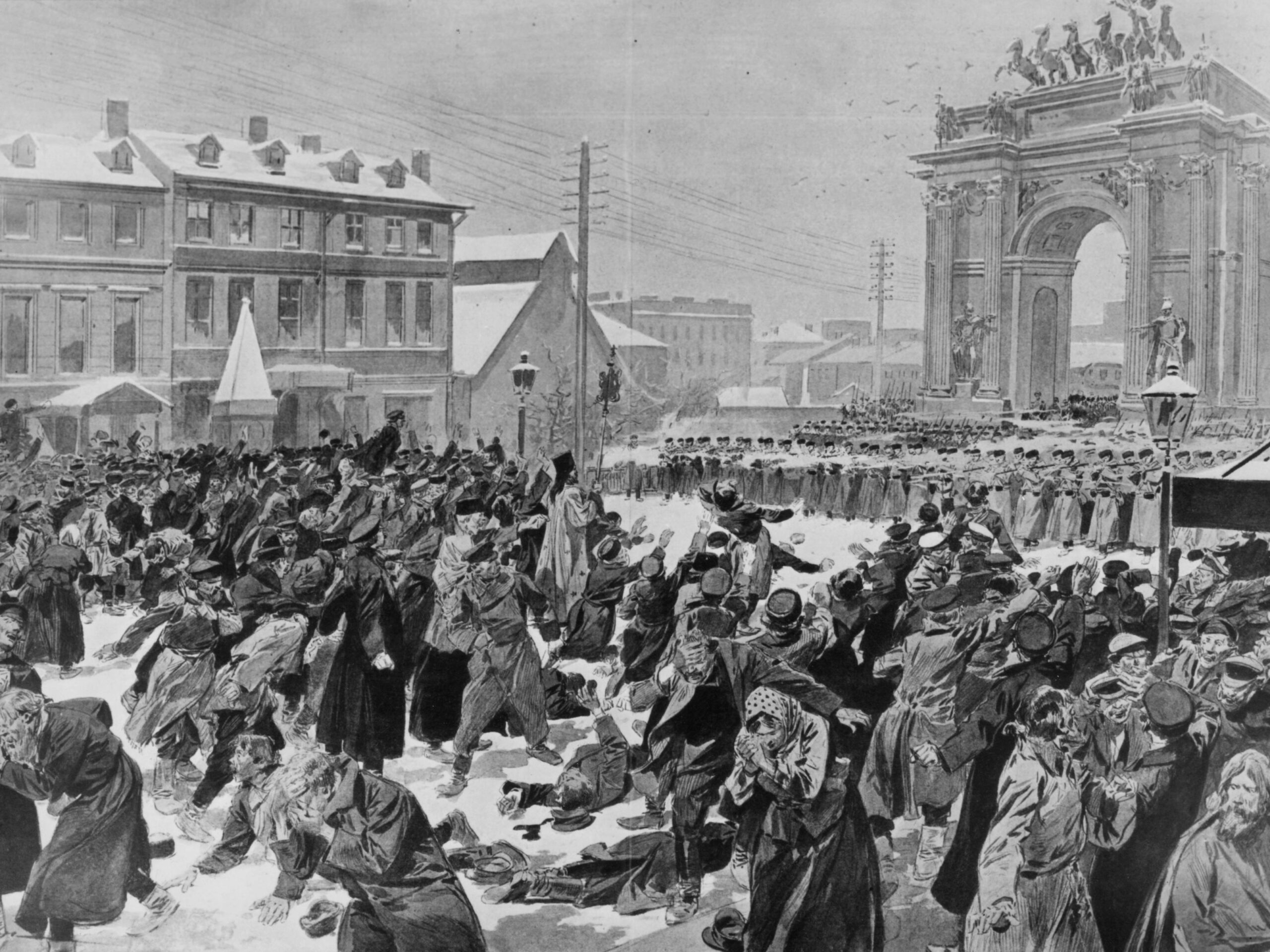On the verge of losing a war against Japan in the Far East, czarist Russia was rocked by internal dissatisfaction that erupted in what would later be referred to as the Bloody Sunday Massacre in St. Petersburg.
Russia had become more corrupt and tyrannical than ever before under the weak-willed Romanov Czar Nicholas II, who assumed power in 1894. Fearful that his line might die out—his only son, Alexis, was hemophiliac—Nicholas fell under the spell of unscrupulous people like Grigory Rasputin, the alleged mad monk. At the turn of the century, Russia’s imperialist goals in Manchuria triggered the Russo-Japanese War, which began in February 1904. Meanwhile, revolutionary leaders, most notably exiled Vladimir Lenin, gathered socialist rebel troops intent on deposing the czar.
To rally support for the unpopular war against Japan, the Russian government permitted a November 1904 meeting of the zemstvos or regional administrations established by Nicholas’s grandfather Alexander II. The demands for reform expressed at this congress were not satisfied, and more radical socialist and labor organizations choose an alternative course of action.
On January 22, 1905, a group of workers led by radical priest Georgy Apollonovich Gapon marched to St. Petersburg’s Winter Palace to present their requests to the czar. Imperial forces opened fire on demonstrators, killing dozens and injuring many more. Strikes and rioting erupted across the kingdom in protest of the killing, to which Nicholas replied by announcing the establishment of a series of representative assemblies, or Dumas, to work toward reforms.
Internal strife in Russia, on the other hand, continued to grow during the next decade, as the state showed an unwillingness to actually reform its repressive ways and radical socialist parties, particularly Lenin’s Bolsheviks, grew stronger and closer to achieving their revolutionary goals. The issue would eventually come to a climax more than a decade later when Russia’s resources were strained to rock bottom by World War I’s pressures.

